So you’re in the market for a new website – or you have a website and you’re wondering what to do with it. How do you know a) what makes a website great and b) how to use your website to get more leads and customers?
It’s true that not all sites are created equal. However, there are certain elements that have been proven time and again to succeed in achieving your business goals.
Does your site have the following elements?
1. Awe-inspiring appearance at first glance
Fact: 48% of people cited a website’s design as the number one factor in deciding the credibility of a business. (Source)
When people land on your website for the first time, you have seconds (literally) before they make a snap judgment and either leave your site immediately or stay a while. Your customers will subconsciously be analyzing everything, from your content and images to your font and colors.
Let’s go through an example. Say you’re planning a nice dinner out. You want to try a new steak house, so you Google “steak house NJ.” Before you decide, you go to the websites of the first two restaurants.
Which one appeals to you more?

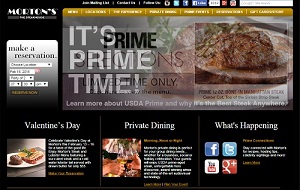
Most of you will probably choose the one on the left – no surprise there, and here’s why.
As soon as you land on Char’s website, you’re instantly drawn into an immersive digital experience. You see big, beautiful imagery of their food and venue, and their headlines invite you to learn more about who they are and what they can offer you. Compared to Char, Morton’s website looks dark and drab.
These elements can be the difference between a missed sale and a happy customer. Therefore, for your website to be profitable, it should fully convey your brand and answer the needs and desires of your target audience.
This leads me to my next point…
2. A seriously fast website
When I see this on my screen:

My immediate reaction is this:
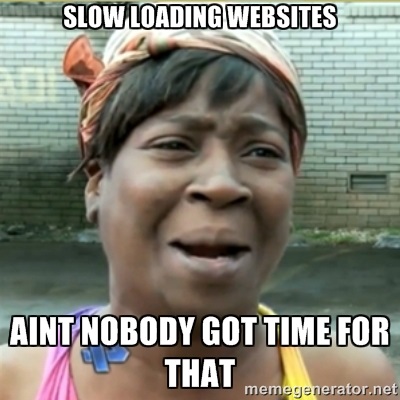
When I have to wait for a site to load, I get annoyed, my finger itches to close the screen, and I’m thinking to myself, “this site better be worth it.” And I’m not the only one who feels this way about slow-loading sites.
Get these stats:
- 79% of shoppers who are dissatisfied with website performance are less likely to buy from the same site again.
- 52% of online shoppers state that quick page loading is important to their site loyalty.
Sites that struggle to load for longer than 10 seconds will abandon your website and go somewhere else. Don’t try your customers’ patience. Create a website with clean code so that doesn’t weigh down your site loading time.
3. User Experience
Did you know that 88% of online consumers are less likely to return to a site after a bad experience?
User experience (UX) is everything in a good website design because of this:
Good UX >> Happy site visitor >> Returns to site >> Sale >> Happy business owner
The reason this is the trajectory is because good user experience hinges on producing exactly what the customer wants the way the customer wants it. Lo and behold, when you deliver the customers’ desires,
Good UX takes time and yes, it also takes money. But think about it this way: every $1 invested in UX can have a return of up to $100 for your business.
4. Assurance of security, reliability, and authority
Security, particularly the fear of credit card data being stolen, is a major reason why users don’t make purchases. This is particularly true for ecommerce sites, where you’re asking for personal and financial information.
Therefore, any time you collect customer information on your site, make sure you clearly state why you’re collecting information and how you’ll be using it.
In addition, it doesn’t hurt to add visual elements – like badges or security seals – that reassure site visitors that you’re trustworthy and won’t do anything shady with their data.


5. Seamless mobile usability
Regardless of whether prospects look at your site on desktop, laptop, tablet, or smartphone, their website experience should be completely seamless. The best way to do this is responsive design.
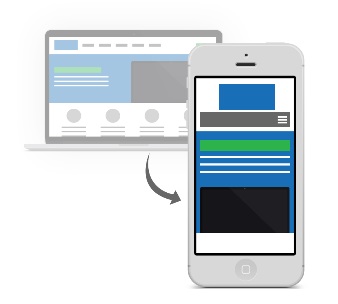
Responsive design is one of the most important components of your website for two reasons:
- It provides an amazing customer experience no matter the device
- Avoid getting slammed by a Google penalty, as mobile usability is an important factor in Google’s ranking algorithm
Don’t lose out on valuable mobile traffic. Invest more than 4% of your budget on mobile, because it’s where 20% of consumers’ time is spent!
6. Clear conversion paths
Think of your website as an online sales rep. It works 24/7 to convince people to become repeat, paying customers. But just as you don’t want your sales reps to confuse people, you similarly don’t want your site to lead people on a wild-goose chase.
People go to websites to find specific information or service. If they can’t easily find what they need to know, they’ll just leave. Therefore, your website must present a clear path for to find information and act on it.
Take our site for example. Through strategically-placed call-to-action buttons and internal links throughout the site, we created clear conversion paths that push visitors to perform one of two actions:
Get more information:
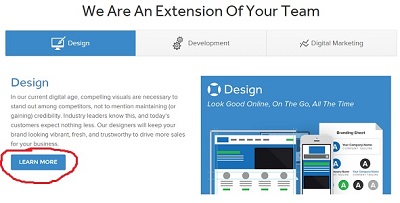
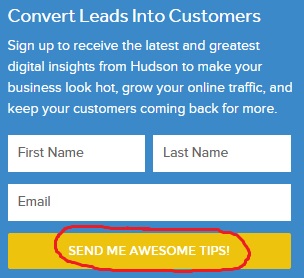
Or get started:

We provide site visitors a simpler way to navigate our site and plenty of conversion opportunities at every stage of their journey.
Effect? We minimize frustration and lead prospects to taking the desired action.
7. Clean and classy content
Last but most certainly not least, your content – the backbone of your website.
Without content, your website is like an empty billboard.

Bad site content is like this embarrassing billboard:
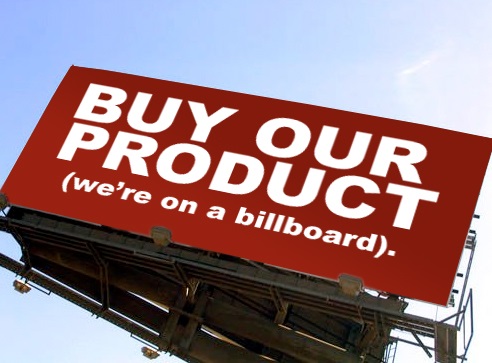
Now remember my previous analogy of your website being like an online sales rep? Well, your content is the pitch. It’s how you instill trust and sell people on your products.
It’s not enough merely to throw some content up on your website and expect instant results. In order to succeed, your website needs high-quality site content that speaks directly to your customers.
Is Your Website Good, Great, or Awesome?
Understanding the behavior, challenges, and needs of your prospects and customers while portraying your company in a compelling way are all necessary in creating an awesome website. This requires integrating your Web design, development, and marketing in order to achieve your business goals.